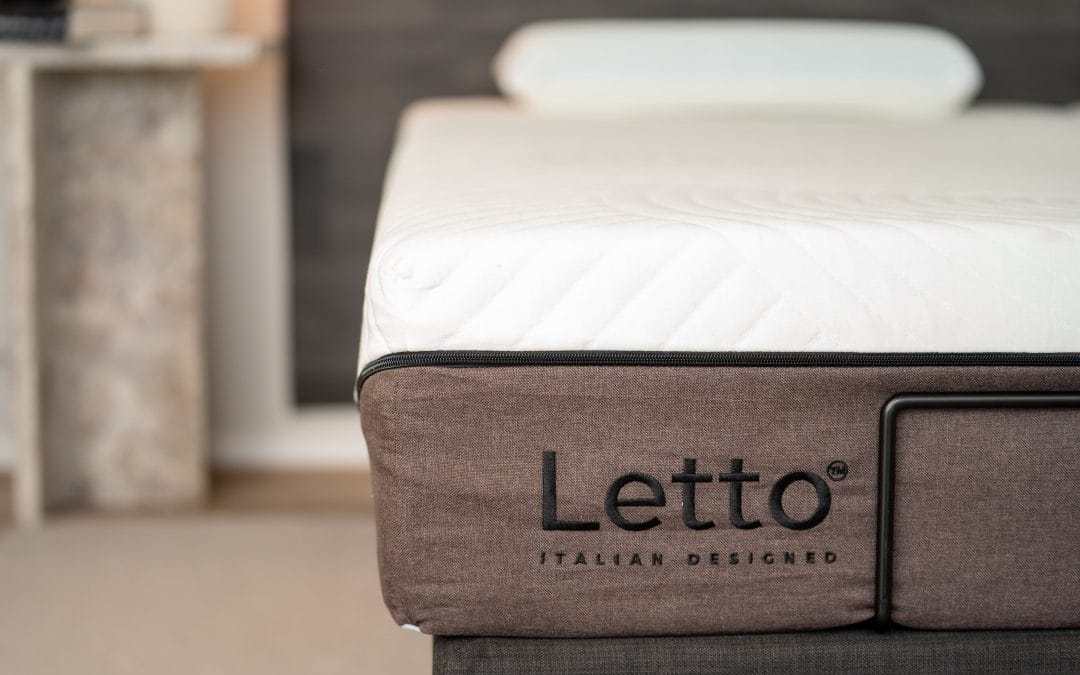
Mattress Buying Checklist
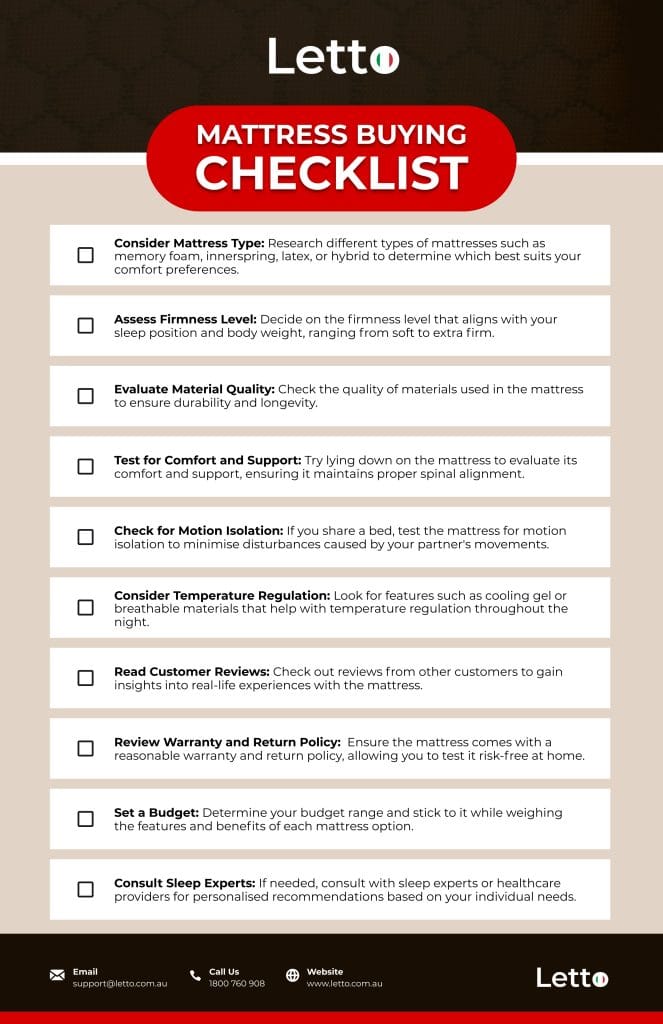


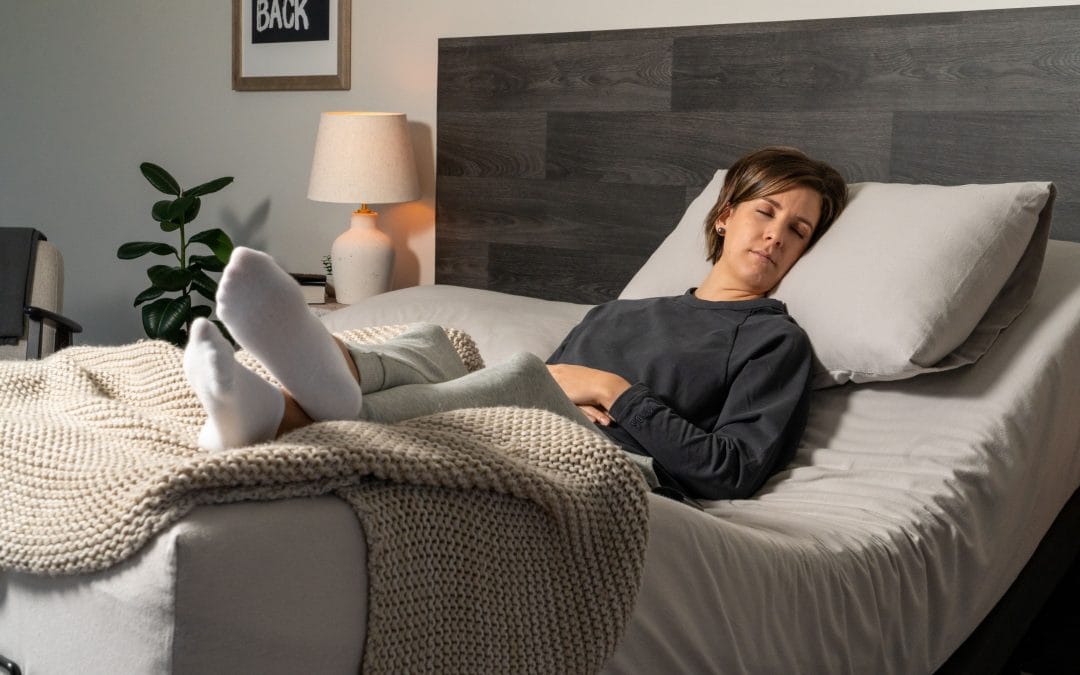
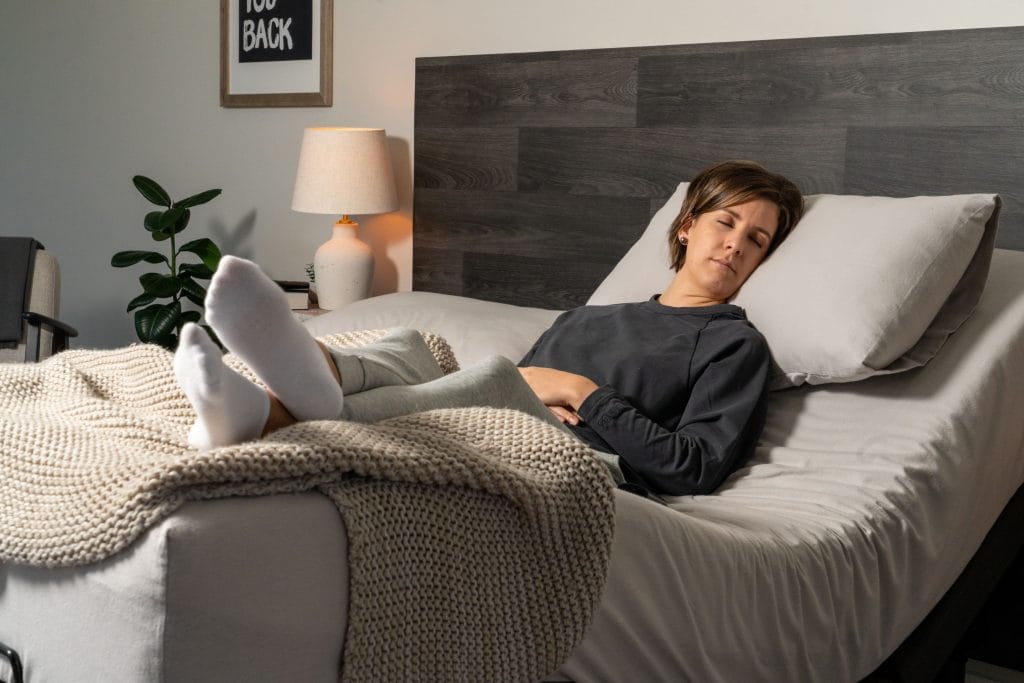
Waking up with a sore neck is in the top 5 worst ways to start your day. Neck pain can be caused by a variety of factors, but one common culprit is sleeping on the wrong pillow. Using an ill-fitting or unsupportive pillow can lead to chronic neck pain and even contribute to other health issues.
If you suffer from neck pain or want to prevent it in the future, choosing the right neck pain pillow is crucial. But with so many different options on the market, how do you know which one is best for you?
This ultimate guide will help you navigate through the different types of pillows and what exactly you should be looking for to find the best pillow for neck pain relief.
Before we dive into choosing the right pillow, it’s important to understand what causes neck pain.
Typically, neck pain is caused by strain on the muscles and ligaments in your neck due to poor posture or repetitive movements.
This can be exacerbated by using an unsupportive pillow that doesn’t properly align your head and spine while you sleep, making it crucial to select a firmer pillow that helps maintain proper spinal alignment and alleviate neck pain.
In some cases, underlying medical conditions such as arthritis or a herniated disc can also cause neck pain. If you experience severe or persistent neck pain, it’s always best to consult with a doctor to rule out any potential underlying issues.
In addition to the type of pillow you use, your work and sleep habits can also play a role in neck pain. Spending prolonged periods of time sitting at a desk or looking down at electronic devices can strain your neck muscles and lead to pain.
Similarly, poor sleeping habits such as using too many pillows or sleeping on your stomach can put extra pressure on your neck.
To help alleviate neck pain caused by these factors, it’s important to maintain good posture throughout the day, take breaks from sitting and stretching regularly, and practice proper sleep hygiene.
This includes using a supportive pillow and considering your sleep position to ensure it provides adequate support and comfort. Choosing a pillow that accommodates various sleep positions is crucial for proper support and comfort, as it meets the unique needs of back, side, and stomach sleepers.

The best pillows for neck pain provide support, relieve pressure on sensitive areas, and promote proper spinal alignment. When choosing a neck support pillow, consider factors like firmness, loft, materials, sleeping position, and budget.
Unfortunately, there is no one size fits all. That’s why we’ve broken down each of these factors to help you make an informed decision when shopping for a pillow.
First up is your sleeping position, which plays a crucial role in determining the best pillow for neck pain.
Side sleepers require additional support and pressure relief to maintain proper spinal alignment and avoid discomfort.
A firmer pillow is essential because it helps fill the gap between the head and the mattress, ensuring the neck is properly supported and aligned.
Ideally, the pillow should be 3-5 inches thick to provide enough elevation to keep the head and spine aligned while preventing strain on the shoulders.
Stomach sleepers should opt for a softer pillow, 3 inches thick or less, to maintain proper alignment of the head and neck and avoid unnecessary strain.
However, it’s best to keep in mind that sleeping on your stomach can put added pressure on the neck and spine, so it’s best to try to switch to a different sleeping position if possible.
Back sleepers benefit most from a medium-firm pillow, typically 3-5 inches thick, as this thickness helps maintain proper spinal alignment throughout the night.
A pillow made of solid memory foam offers just the right balance of support and pressure relief, ensuring the head and neck are cradled without sinking too deeply.
This combination promotes a comfortable and restful sleep, reducing the risk of waking up with stiffness or discomfort.

The next factor to consider when looking for the best pillow for neck pain is the material it’s made from.
Memory foam pillows are popular among individuals with neck pain because they offer excellent support and pressure relief. Shredded memory foam, often blended with natural fibres like kapok, provides adjustable comfort and support for different sleeping positions.
They also conform to the shape of your head and neck, ensuring proper alignment while you sleep. A contour pillow delivers essential corrective support, particularly beneficial for individuals experiencing head and neck pain from misalignment.
However, some people may find memory foam pillows too firm or hot, so it’s essential to choose a high-quality option that offers ventilation and cooling properties.
Latex pillows are another excellent option for neck pain relief as they provide excellent support and pressure relief while also being more breathable than memory foam.
The Saatva Latex Pillow is a common choice, especially due to its adjustable design, which accommodates various types of sleepers.
They are also naturally resistant to allergens and dust mites, making them a great option for those with allergies.
However, latex pillows can be more expensive than other options, so it’s essential to consider your budget when choosing this material.
Down and feather pillows are known for their softness and comfort, but they may not offer enough support for individuals with neck pain.
However, if you prefer a softer pillow or find memory foam or latex too firm, down and feather may be a good option for you.
It’s crucial to note that these types of pillows may need frequent fluffing and maintenance to maintain their shape and support over time.
Cervical pillows are specialised sleep aids designed to provide support to the neck and align the spine while sleeping.
They often have a curved design that supports the natural curve of your neck, helping to relieve neck pain and maintain proper spinal alignment, especially for side and back sleepers.
These pillows come in various materials such as memory foam, latex, or polyester fill, so you can choose one based on your preferences and needs. Adapting to a cervical pillow can take time, but it ultimately serves as an effective tool for improving sleep quality and alleviating neck strain.
Aside from pillow type and material, there are other factors that can affect neck pain when choosing a pillow:
Some pillows, like memory foam pillows, come with adjustable features, such as removable inserts or layers, to allow for customisation and better support.
This can be beneficial for individuals with varying degrees of neck pain or combination sleepers who change sleeping positions throughout the night.
If you tend to get hot while sleeping, consider pillows with breathable materials like Ice fibre covers and gel-infused memory foam to keep you cool and comfortable.
The loft of a pillow refers to its height or thickness. The right loft for you will depend on your sleeping position and personal preference.
For example, back sleepers may benefit from a lower loft, while side sleepers may need a high loft pillow for proper support.
The firmness of a pillow is also essential to consider when trying to reduce neck pain. A firmer pillow can provide more support for the head, neck, and shoulders, enhancing neck support and alleviating neck pain.
However, they may not be comfortable for everyone. It’s important to find a balance between support and comfort when choosing the right firmness level for your pillow.
If you have allergies, it’s important to choose a pillow that is hypoallergenic and resistant to dust mites. Pillows made with synthetic materials like polyester or memory foam are often a better choice for those with allergies compared to down or feather-filled pillows.
Proper care and maintenance of your pillow can also affect its ability to provide support and alleviate neck pain. Regularly fluffing and washing your pillow can help maintain its shape and cleanliness, ensuring its effectiveness in providing support for your neck.
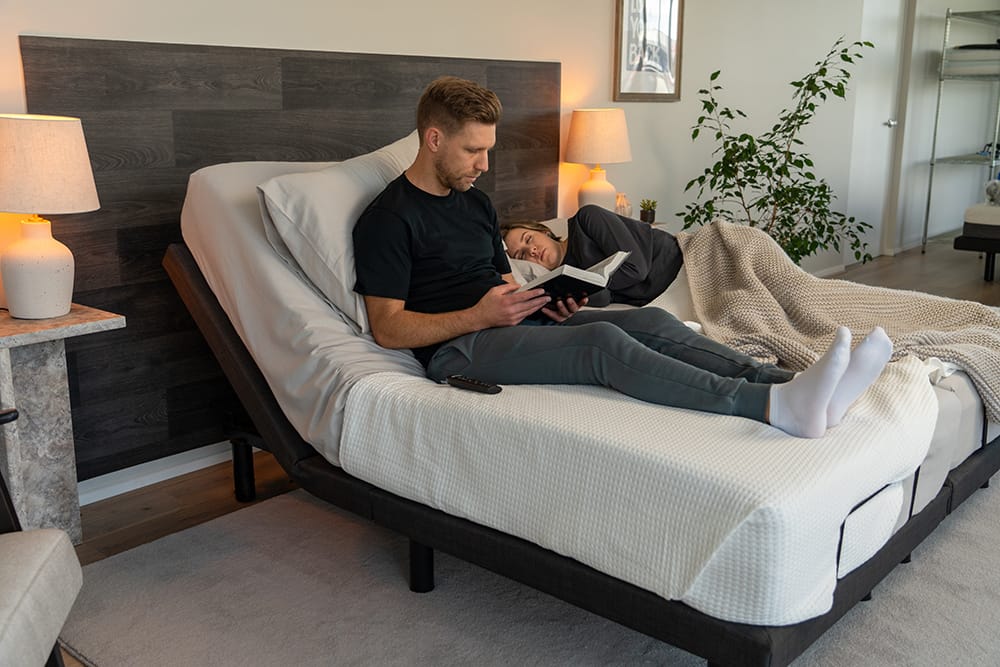
It’s easy to think that the position of your Neck is the only thing that matters when it comes to sleep posture, but your spine plays a crucial role as well. Proper spine alignment helps prevent strain on your muscles and joints, reducing discomfort and pain.
A supportive pillow ensures that your head, neck, and spine are in a neutral position while you sleep. This reduces pressure points and encourages healthy spinal alignment throughout the night.
Having a pillow that supports your spine also means less tossing and turning during the night, leading to a more restful and uninterrupted sleep.
Having the right pillow is more than just ensuring your neck and spine are supported. Quality sleep requires the right balance of comfort and support.
Using the right pillow can significantly enhance your sleep quality by reducing disturbances caused by discomfort or pain. It fosters deeper, more restorative sleep cycles, helping you wake up refreshed and ready to tackle the day ahead.
The perfect pillow should support your head and neck just right, keeping them in a neutral position. This not only helps you fall asleep quicker but also stay asleep longer for a better night’s rest.
Picking the right material is just as important for good sleep. Memory foam pillows are a great option since they contour to your head and neck, giving you personalised support and making your sleep even better.
For more tips on how to improve your sleep quality, check out our comprehensive guide on how to get deeper sleep.
Finding the perfect balance between comfort and support can be a challenge, especially if you struggle with poor posture or wake up with a sore neck. Whether you’re a side sleeper, spend long hours at a desk, or simply want better alignment, the right pillow can make all the difference.
Designed with your unique needs in mind, the Letto Adjustable Bed Pillow adapts to your posture, providing personalised support exactly where you need it. The quick, 30-second adjustability makes it effortless to use, so you can enjoy instant comfort without any hassle.
What sets it apart is the advanced materials—ice fibre and gel-infused memory foam—that help regulate body temperature. No more waking up feeling overheated or uncomfortable.
Instead, the contour memory foam pillow will keep you cool, and give you support that helps you rest without waking up with a stiff neck or back.
It’s so easy to dismiss your pillow as a minor detail in your sleep routine, but it can have significant impacts on your overall well-being.
If you experience any of the following issues, then it may be time to consider upgrading your pillow:
Check out our top 8 sleeping tips to improve your rest and take advantage of the benefits that come with using the right pillow.
The quality of your sleep has a profound impact on your daily life, and it all starts with the right pillow. The Letto Adjustable Pillow is designed with your comfort and health in mind, offering customisable support to suit your unique needs.
Whether you’re a back, side, or stomach sleeper, this pillow adapts to you, promoting proper spinal alignment and helping you wake up pain-free and energised.
Don’t settle for restless nights and discomfort. Make the switch to the Letto Adjustable Pillow today and feel the difference in your sleep quality. Plus, explore our range of premium sleep products designed to enhance your comfort and take your rest to the next level.
Shop the Letto Adjustable Pillow now and discover our full collection of sleep solutions!
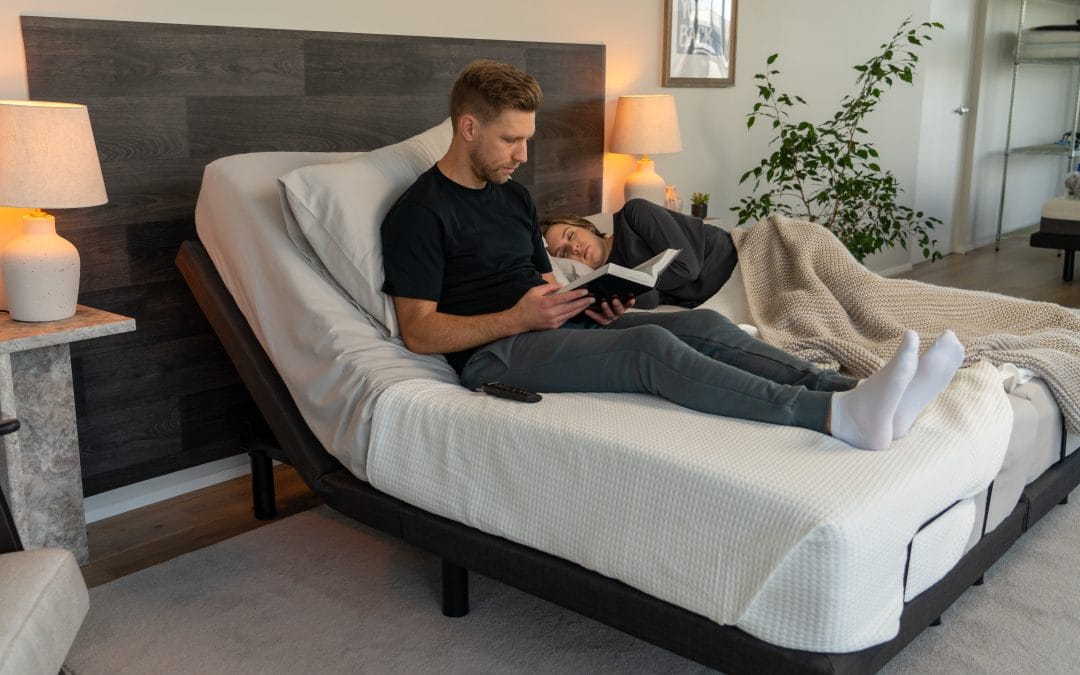

Did you know that sleep is more than just a way to rest and recharge your body? While most people know that getting enough sleep is important for overall health, many are not aware of the different stages of sleep that occur during a typical night’s rest.
One stage, in particular, deep sleep, plays a crucial role in our physical and mental well-being. Getting the right amount of deep sleep each night is essential for optimal functioning and productivity.
But how much deep sleep should you aim for?
Let’s take a closer look at the importance of deep sleep and how to get the recommended amount.
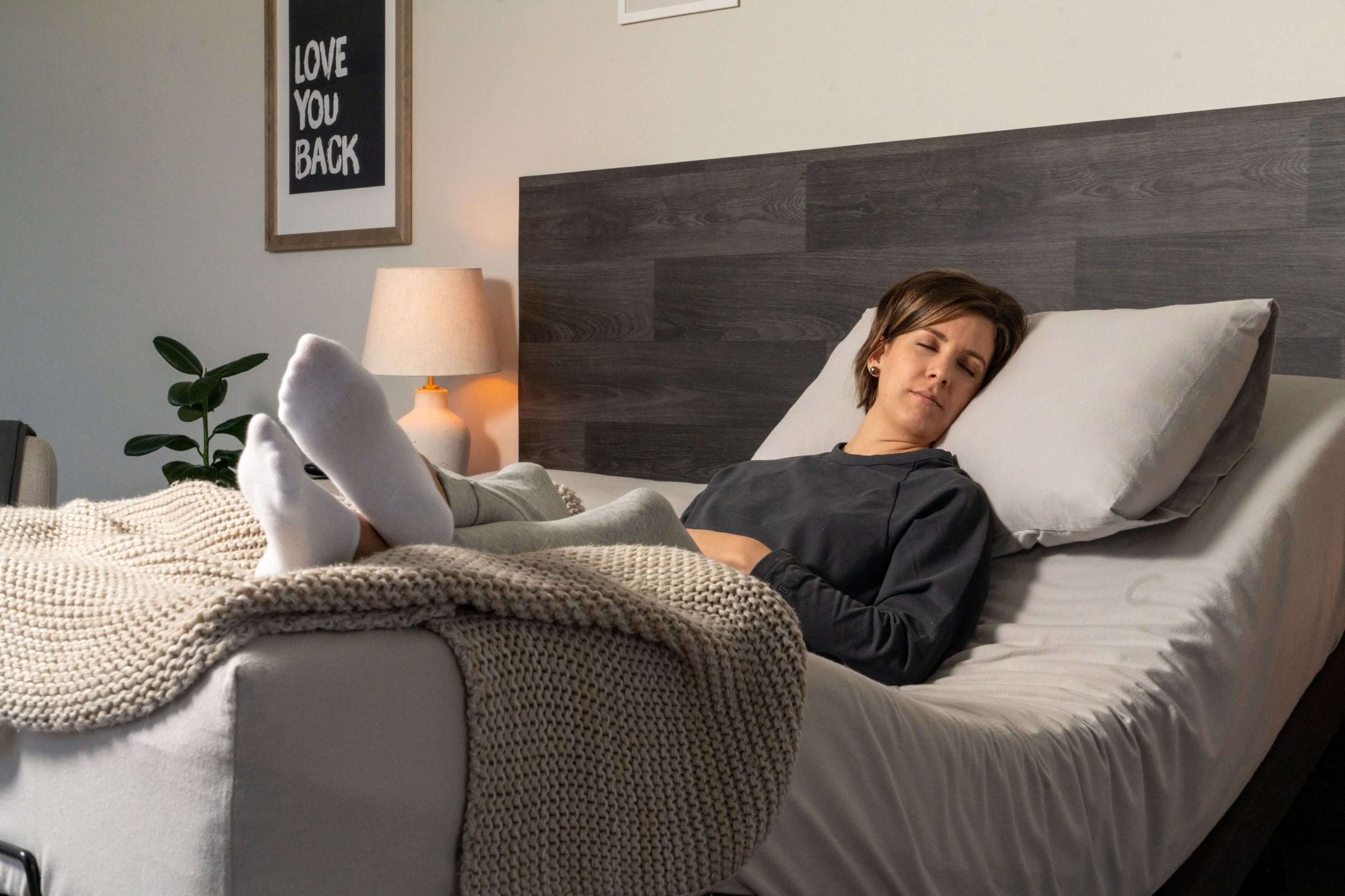
Deep sleep, also known as slow-wave sleep (SWS), is the third stage of non-rapid eye movement (NREM) sleep. It typically occurs within the first few hours of falling asleep and makes up about 20-25% of our total sleep time.
During this stage, brain activity slows down significantly, and our bodies enter a state of physical relaxation.
But don’t let the name fool you—deep sleep is anything but a passive state. In fact, it is a crucial time for our bodies to repair and rejuvenate. Our brain waves slow down, allowing our body to focus on repairing and regenerating tissues, strengthening our immune system, and consolidating memories.
During deep sleep your heart rate will slow, your breathing becomes more regular and your muscles relax. It is also the time when our bodies produce important hormones like growth hormone, which helps with tissue repair and regeneration.
A lot of people focus on their REM sleep, which is our light sleep cycle when most dreaming occurs and is associated with cognitive and emotional restoration. However, deep sleep is just as important for our overall health and well-being if not more so.
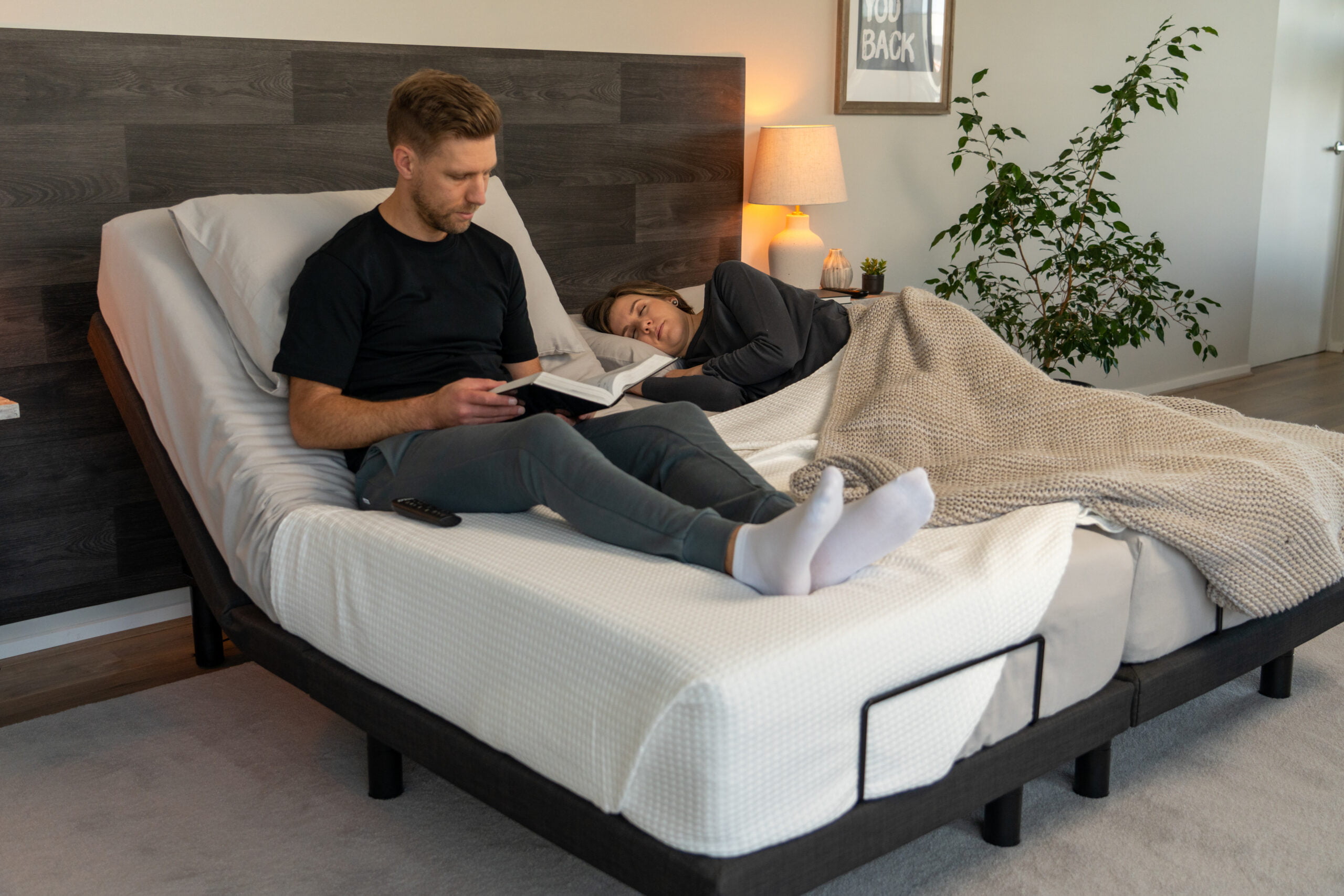
While all stages of your sleep cycle are essential for proper functioning, the deep sleep stage has some unique benefits that make it crucial for our overall health.
Physical Restoration: As mentioned earlier, deep sleep is the stage where our bodies enter a state of physical relaxation and can focus on repairing and regenerating tissues. This stage is particularly important for athletes or anyone who engages in physical activity, as it helps with muscle recovery and growth.
Mental Rejuvenation: Deep sleep is not just crucial for our physical health, but also for our mental health. It allows our brain to rest and recharge, promoting cognitive function, memory consolidation, and emotional regulation. The older you get the more retaining deep sleep becomes, making it crucial for maintaining cognitive health as we age.
Hormonal Balance: During deep sleep, the production of growth hormone increases. This hormone helps with tissue repair and muscle building, as well as regulating metabolism and immune system functions. Lack of deep sleep can disrupt this balance and lead to issues such as weight gain, weakened immunity, and hormonal imbalances.
Mood Regulation: Adequate deep sleep has been linked to improved mood stability and a decrease in symptoms of anxiety and depression. On the other hand, chronic lack of deep sleep can lead to irritability, mood swings, and increased risk of mental health disorders.
Sleep really is the glue that holds our physical and mental well-being together. Deep sleep, in particular, plays a crucial role in keeping our bodies and minds functioning at their best.
So next time you’re tempted to stay up late binge-watching your favourite show or scrolling through social media, remember the many benefits of a healthy sleep cycle and make sure to prioritise it in your daily routine.
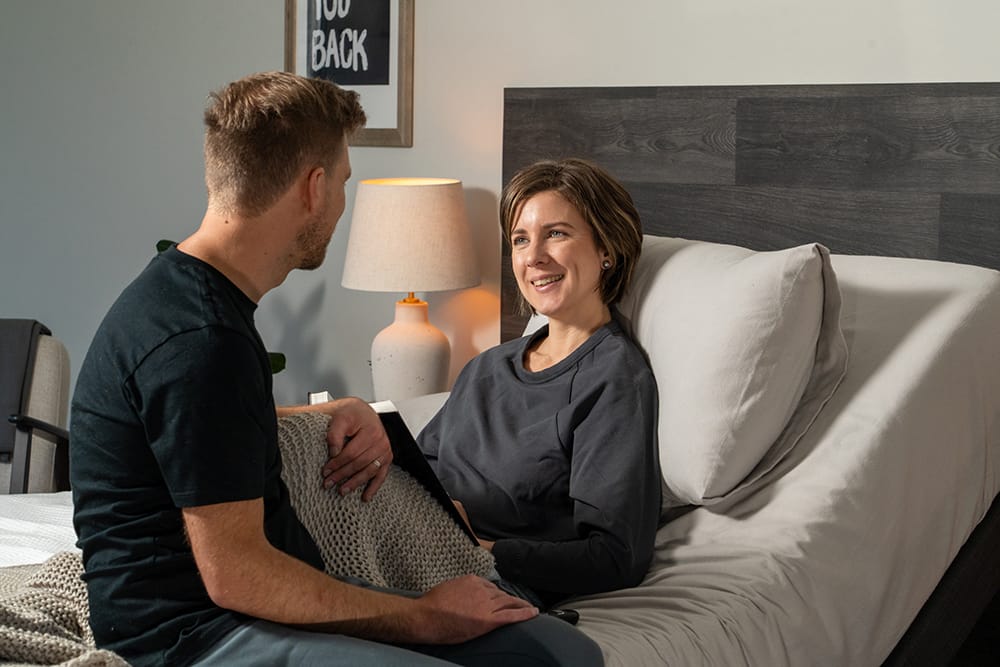
So how much deep sleep do we actually need? This all depends on how much sleep you get in total. On average, adults need 7-9 hours of sleep per night, with deep sleep accounting for 20-25% of that time.
This means that ideally, we should aim for around an hour and a half to two hours of deep sleep each night.
Most adults experience the longest amount of deep sleep in the first half of their night’s rest, so it’s important to prioritise getting enough quality sleep during these crucial hours.
Typically, you’ll experience deep sleep in cycles throughout the night, with each cycle lasting around 90 minutes. So even if you don’t get an exact number of hours of deep sleep every night, as long as you’re getting enough overall and prioritising quality sleep, your body will still reap the benefits.
However, everyone’s sleep needs are different and can vary based on age, lifestyle factors, and individual health conditions. For instance, if you’re coming off a busy week and haven’t had adequate sleep, your body may need extra deep sleep to make up for the sleep deprivation.
And if you’re a nap taker, your deep sleep decreases at night since some of that requirement may be fulfilled during your naps.
It’s important to listen to your body and pay attention to how you feel after a good night’s rest, as this can give you insight into your personal needs for deep sleep.
While it may seem daunting to try and track your sleep cycles and aim for a specific amount of deep sleep each night, there are now many wearable devices and smartphone apps that can help monitor your sleep patterns and provide insights into your deep sleep stages.

Unfortunately, not everyone is able to achieve the recommended amount of deep sleep each night. Sleep disorders such as insomnia, sleep apnea, and restless leg syndrome can all disrupt our ability to reach deep sleep stages.
Insomnia, which is characterised by difficulty falling or staying asleep, can lead to a lack of overall sleep time as well as fragmented or shallow sleep cycles. This means that even if you do fall into deep sleep, it may not be enough or long-lasting enough to reap all the benefits.
Sleep apnea is a disorder where breathing pauses and restarts during the night, causing interruptions in deep sleep. This disruption can also lead to daytime fatigue and other health issues.
Additionally, restless leg syndrome (RLS) can cause uncomfortable sensations in the legs that make it difficult to fall asleep and stay asleep. This constant movement or urge to move can disrupt deep sleep and lead to daytime fatigue as well.
If you suffer from any of these sleep disorders, you might want to look into a new mattress or pillows that can help support your body and alleviate any pressure points that may be contributing to your discomfort.
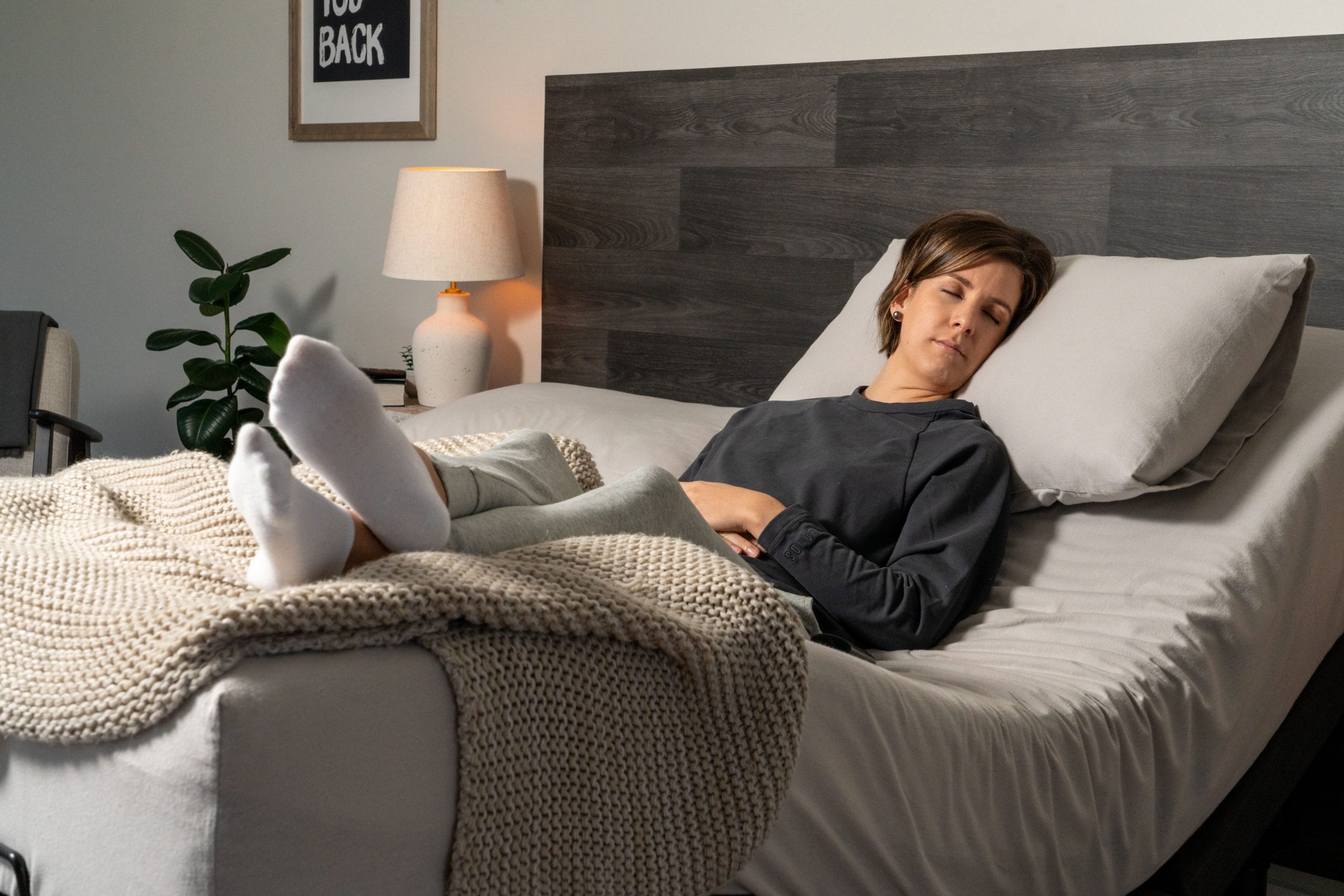
Aside from addressing any underlying sleep disorders, there are also lifestyle changes you can make to help improve the quality of your deep sleep. Some tips include:
Going to bed and waking up at the same time each day can help regulate your body’s internal clock and promote better overall sleep.
Make sure your bedroom is dark, cool, and quiet to promote deeper sleep. Consider investing in blackout curtains or white noise machines if needed.
These substances can disrupt your ability to fall asleep and stay asleep deeply.
Deep breathing, meditation, or gentle stretching can help relax your body and mind before bedtime, promoting deeper sleep.
Regular physical activity can help improve the quality of your sleep overall, including deep sleep. Just make sure to avoid intense exercise close to bedtime as it can stimulate the body and make it difficult to fall asleep.
Check out our guide to the best sleeping tips to improve your overall sleep quality.

You might think that what you do when you’re awake has nothing to do with your deep sleep, but that’s not entirely true. The lifestyle choices you make during the day can greatly impact the quality of your sleep at night.
For example, a healthy diet and regular exercise can help promote better overall sleep, including deep sleep.
On the other hand, consuming caffeine or alcohol close to bedtime, as well as staying up late watching TV or scrolling through your phone, can disrupt your body’s natural sleep-wake cycle and make it harder to achieve restful deep sleep.
Additionally, stress and anxiety from daily life can also negatively affect your ability to fall into a deep sleep. Finding ways to manage and reduce these sources of stress can ultimately lead to better overall sleep.
Within the first 30 minutes of waking up, try to get out in the sunlight to help regulate your body’s natural sleep-wake cycle. Exposure to natural light during the day can also improve sleep quality, making it easier for you to achieve deep and restful sleep at night.
By making small changes to your daily routine and prioritising healthy habits, you can improve the quality of your deep sleep and reap the many benefits that come with it.
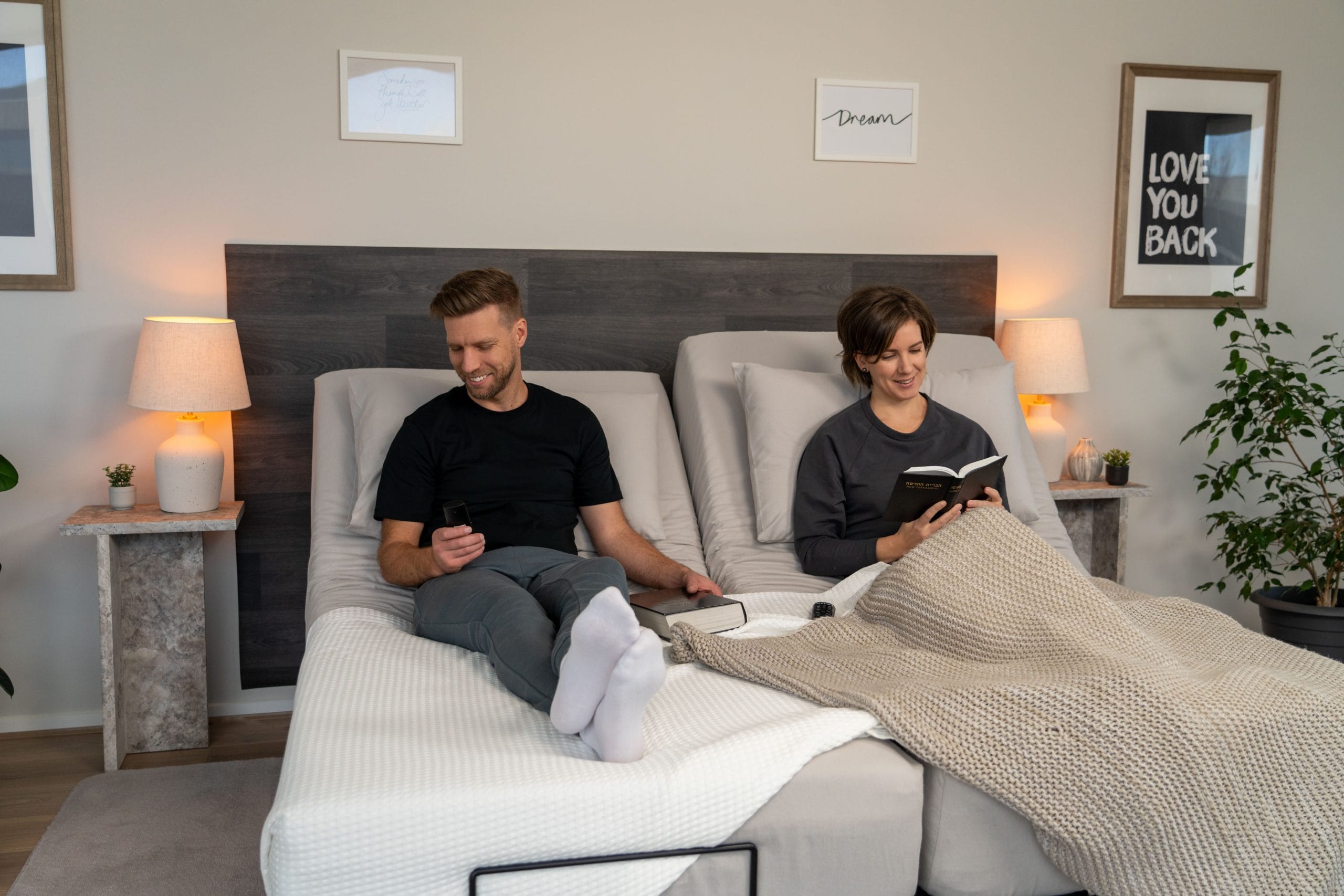
Deep sleep plays a crucial role in physical recovery, making it an essential component of a healthy lifestyle.
During deep sleep, the body engages in major repair work, including muscle growth, tissue repair, and protein synthesis. This stage of sleep is particularly important for individuals who engage in physical activities, such as athletes or fitness enthusiasts, as it helps in recovering from physical exertion.
Hormones, such as human growth hormone (HGH), are released during deep sleep, which aids in cell regeneration and muscle repair.
Additionally, deep sleep bolsters the immune system, helping the body fend off infections and illnesses. By understanding the importance of deep sleep for physical recovery, individuals can prioritise getting adequate, quality sleep to enhance their overall physical health and performance.
If you’ve been hitting the gym for a while now, and you aren’t seeing the results you want, it might not be your workout that needs adjusting. Instead, it could be the quality of your sleep.
Insufficient deep sleep can lead to increased fatigue and slower physical recovery after a workout, which can hinder progress and make it harder to achieve fitness goals.

Not only is deep sleep crucial for physical recovery, but it also plays a significant role in mental health.
During the deep stages of sleep, the brain engages in essential processes such as consolidating memories and processing emotions, which are vital for learning and overall cognitive function. This phase of sleep allows individuals to organise and retain information from the day, facilitating better recall and understanding when awake.
Moreover, it enhances emotional regulation, helping individuals cope with stress and navigate daily challenges more effectively.
A lack of quality deep sleep has been linked to an increased risk of mental health disorders such as depression and anxiety. When individuals do not get enough restorative sleep, their ability to manage emotions diminishes, leading to heightened feelings of irritability and mood swings.
Furthermore, research has shown that individuals who struggle with chronic insomnia are not only more likely to experience symptoms of these conditions but may also find it increasingly difficult to break the cycle of poor sleep and mental health issues.
The interplay between inadequate sleep and mental health can create a vicious cycle, making it imperative to prioritise deep sleep for overall well-being.
Ensuring a consistent sleep schedule and adopting good sleep hygiene practices can help mitigate these risks and promote healthier sleep patterns.

So back to the original question—how much deep sleep do you need? The amount of deep sleep required varies from person to person and depends on various factors such as age, lifestyle, and overall health.
But if you’re getting the recommended 7-9 hours of sleep per night, you can expect to spend around 20% of that time in deep sleep. Which is around 1.5-2 hours of deep sleep each night. This is when you’re in a restorative state, and your body can repair and rejuvenate itself. If you were to be woken up during this stage, you would feel groggy and disoriented.
If you’re not getting enough deep sleep, make it a priority to increase your overall sleep duration and quality. You may need to try a different bedtime routine, or maybe it’s time to invest in a new mattress. There are multiple factors that can impact the quality of your sleep, so it’s essential to pay attention and make necessary changes for better deep sleep.
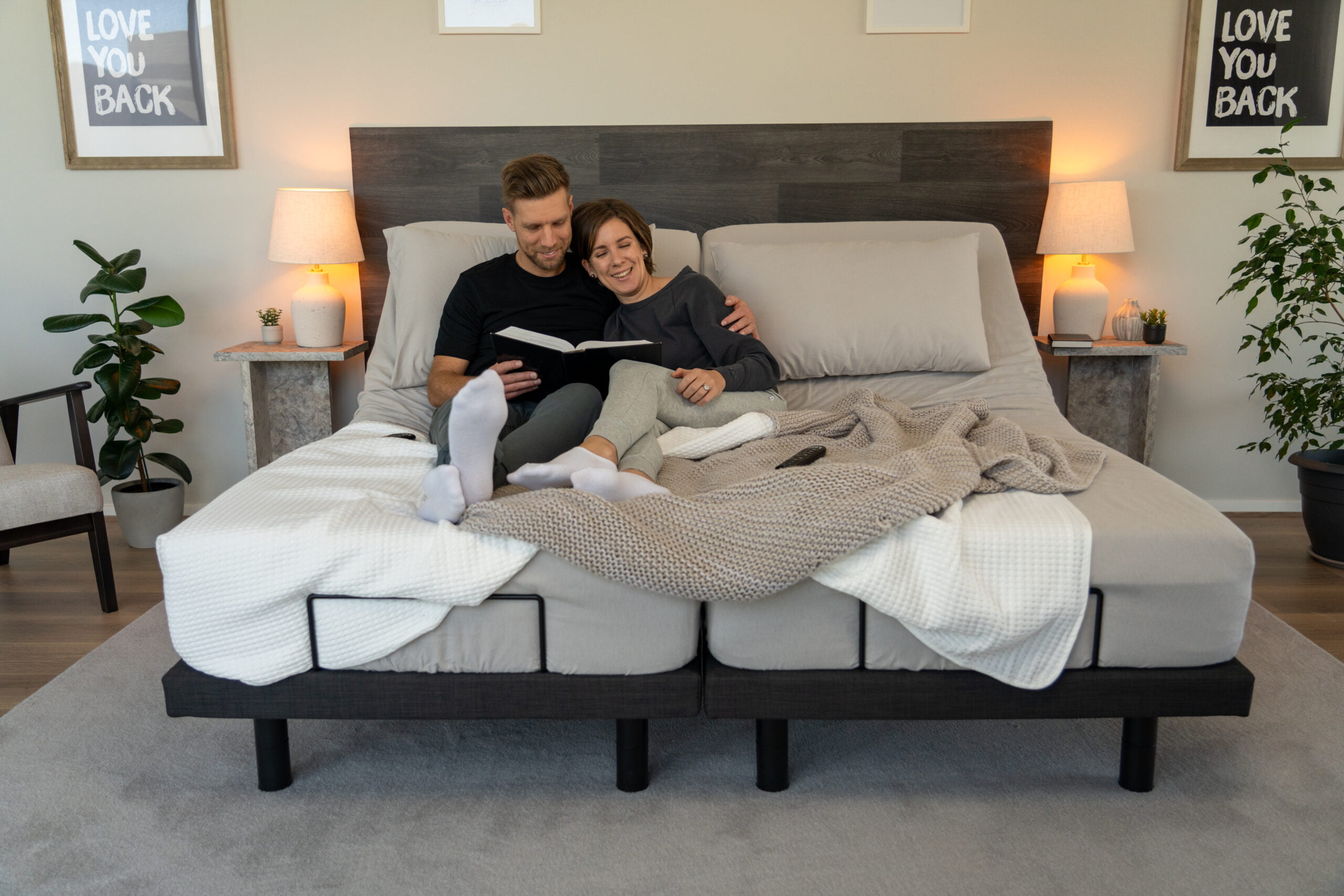
Deep sleep plays a vital role in our overall mental and physical well-being. It is essential to prioritise getting enough quality deep sleep to support our daily functions and prevent potential mental health issues.
If you struggle with getting enough restorative sleep, make it a priority to establish good sleep hygiene practices and seek help if needed. Remember, investing in your sleep is investing in your overall health and happiness.
At the end of the day, the relationship between deep sleep and mental health highlights the importance of prioritising healthy sleeping habits. From reducing symptoms of mental health conditions to improving mood regulation, deep sleep plays a crucial role and at Letto, we want to help you achieve the best sleep possible.


Having a good night’s sleep is one of the best ways to improve your physical and mental health. It is essential for maintaining a healthy immune system, keeping our energy levels up, and improving our overall mood.
However, it can be challenging to get quality sleep if we don’t have a good night routine in place.
A night routine will help us wind down after a long day, prepare our bodies for sleep, and improve the overall quality of our rest.
In this guide, we will discuss how to build a good night routine for better sleep and what habits we should incorporate into our nightly routine.
Sleep hygiene is a term used to describe healthy habits and practices that promote good sleep. It includes actions such as setting a regular bedtime, avoiding caffeine and heavy meals close to bedtime, and creating a comfortable sleep environment.
When you were younger, I’m sure you just hit the pillow and fell asleep instantly. However, as we age, our bodies and minds need a little more help to relax and prepare for sleep.
Having a consistent bedtime routine signals to our body that it is time to wind down and rest. It helps regulate our body’s internal clock, also known as the circadian rhythm, which controls our sleep-wake cycle.
Without a proper night routine, we may have difficulty falling asleep or staying asleep throughout the night. This can lead to various health issues such as fatigue, irritability, and even chronic conditions like insomnia. And there is really nothing worse than feeling exhausted all day because of a poor night’s sleep.
A good night routine helps us relax, both physically and mentally, leading to better-quality sleep.
Going through the same calming sleep routine every night can help reduce stress and anxious thoughts that may keep us up at night.
With a good night’s rest, we wake up feeling refreshed and energised, making it easier to be productive throughout the day.
Now that we understand the importance of bedtime routines let’s discuss some healthy sleep habits that we can incorporate into our nightly routine for better sleep.

It’s super important that our bedroom is a comfortable and relaxing place to sleep. Here are some tips for creating a healthy sleep environment.
Our body temperature naturally drops when we sleep, so keeping our bedroom at a cooler temperature (around 65-68 degrees Fahrenheit) can promote better sleep.
Also, make sure to keep the room as dark as possible by using blackout curtains or an eye mask if needed. Darkness signals to our brain that it is time to produce melatonin, the hormone that helps us fall asleep.
A messy and cluttered bedroom can create feelings of stress and anxiety, making it difficult to relax and fall asleep. Keep your bedroom clean and organised to create a more peaceful environment.
Additionally, try to remove any electronics or distractions from your bedroom. The blue light emitted from screens can suppress melatonin production and disrupt our sleep.
Certain scents, like lavender, chamomile, and vanilla, have been shown to promote relaxation and improve sleep quality.
Incorporate these scents into your bedtime routine by using a diffuser or placing some essential oils on your pillow.

If you struggle with falling asleep, here are some relaxation techniques that can help you drift off more quickly.
This technique involves tensing and relaxing different muscle groups in the body, which can help release tension and promote relaxation.
Start by tensing your muscles for 5-10 seconds and then releasing them while taking deep breaths.
Deep breathing exercises focus on slowing down your breath and bringing awareness to your body. This can help calm the mind and ease any racing thoughts that may be keeping you awake.
Try inhaling for 4 seconds, holding for 7 seconds, and exhaling for 8 seconds. Repeat this cycle for a few minutes until you feel more relaxed.
Visualisation involves imagining yourself in a peaceful and relaxing environment, such as lying on a beach or walking through a forest, basically your happy place.
This can help distract your mind from any stressors or worries and promote feelings of calmness. We recommend dimming the lights and closing your eyes while practising visualisation.
Guided meditations are audio recordings that walk you through different relaxation techniques, such as deep breathing and visualisation. These can be helpful for individuals who struggle with quieting their minds on their own.
You’ll find quite a few apps and online resources that offer guided meditations specifically for sleep.
Doing gentle stretches or yoga poses before bed can help release tension in the body and promote relaxation.

Once you know what works for you, you can start to incorporate these relaxation techniques into a nighttime routine.
This will look different to each person, but there are certain things that should be non-negotiable in a good nighttime routine:
Building a nighttime routine can take time and experimentation to find what works best for you. It’s important to be patient with yourself and not get discouraged if it takes some trial and error.
Some other helpful tips for promoting better sleep include exercising regularly during the day, limiting caffeine intake later in the day, avoiding heavy meals close to bedtime, and limiting alcohol consumption before bed.

Consistency is key when it comes to getting better sleep. This not only applies to having a consistent bedtime and wake-up time but also to sticking to your nighttime routine.
By consistently following your nighttime routine, your body will begin to associate these actions with preparing for sleep, making it easier to fall asleep and improve the quality of your sleep.
One of the most important things is to keep your night routine even on the weekends. This may be tempting to stay up late and sleep in, but it can disrupt your body’s natural sleep rhythm and make it harder to readjust during the week.

A good night’s sleep is not only about maintaining a consistent routine but also about the quality of your sleeping environment.
One crucial aspect of this environment is your bedding, including your mattress, sheets, and pillows.
A supportive mattress can alleviate pressure points, promote proper spinal alignment, and reduce the chances of waking up with aches and pains.
Additionally, high-quality sheets made from breathable materials like linen can enhance comfort by regulating temperature and wicking away moisture.
Similarly, choosing the right pillow that suits your individual sleep position can provide adequate neck support and contribute to overall sleep quality.
Investing in the right bedding can make a significant difference, transforming your bed into a comfortable haven that promotes restful sleep and helps you feel refreshed and rejuvenated.

At Letto, we know it’s all about consistency. Finding a bedtime routine that works for you can be challenging, but it’s worth the effort in the long run.
It helps to train our bodies to relax and prepare for rest at the same time each night. Along with a comfortable bed and high-quality bedding, a well-established bedtime routine can significantly improve the overall quality of our sleep.
So next time you’re tempted to skip out on your nighttime routine, remember the benefits it has on your mind and body and make it a priority for better health and wellness.
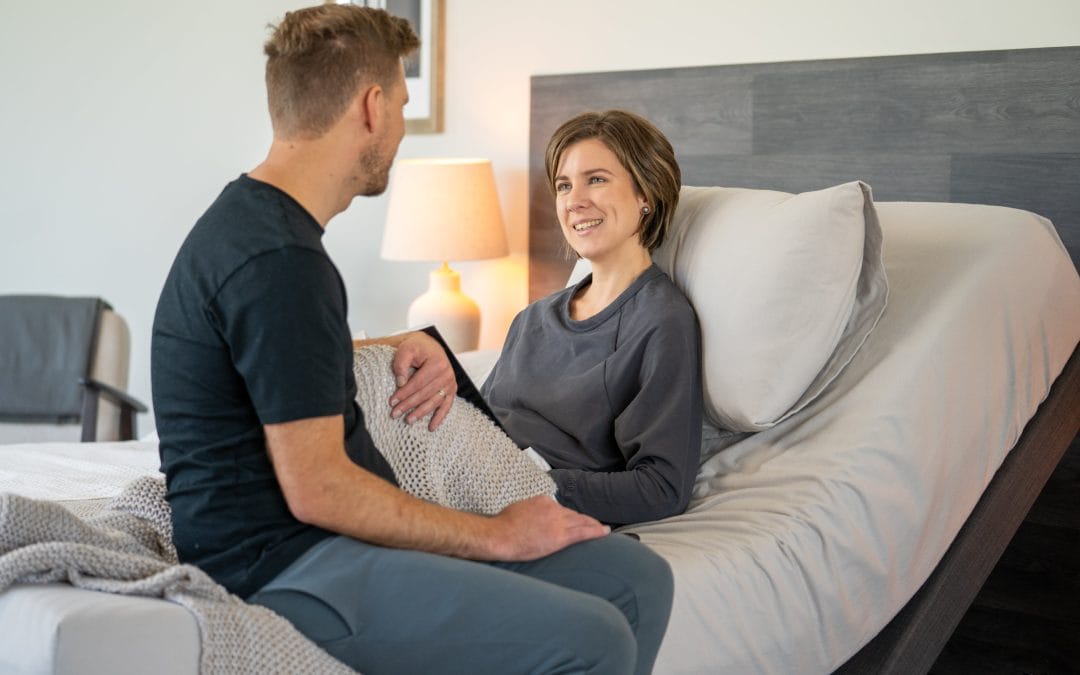
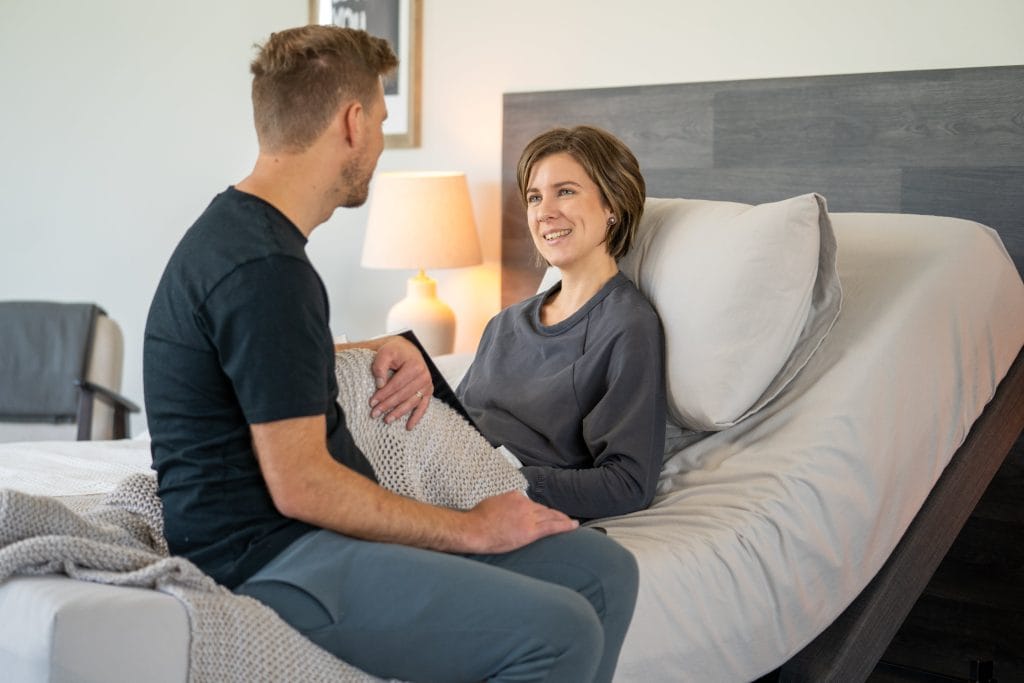
Everyone longs for that ideal night’s sleep, waking up feeling refreshed and revitalised. Yet, there are times when, despite clocking in enough hours of sleep, you still rise feeling groggy and drained. One of the major culprits could be your mattress.
A high-quality mattress is crucial for a good night’s rest. It not only offers comfort but also supports your body while you sleep. With many options and price ranges available, selecting the right mattress can feel daunting. However, by following these expert tips, you can discover the perfect mattress that meets your needs and ensures you wake up well-rested.
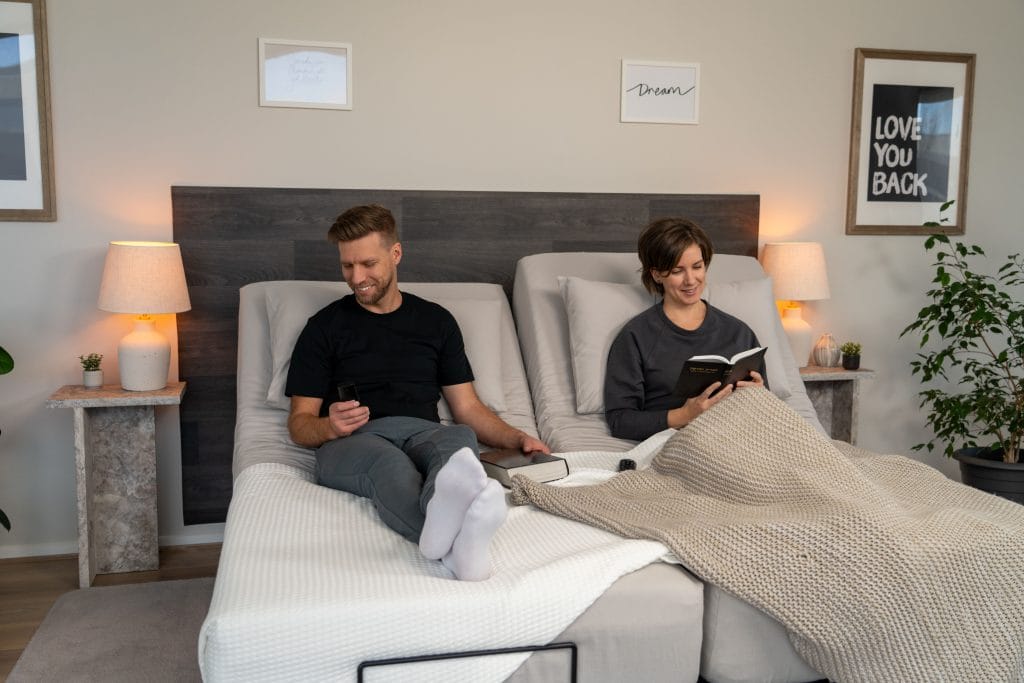
Choosing the right mattress involves more than just following the latest trends or relying on a salesperson’s pitch. This detailed guide will walk you through everything you need to know to find the mattress that promotes the best night’s sleep for you.
It’s crucial to remember that what works for others might not work for you, so taking the time to understand your body’s needs is a key step in the decision-making process. Let’s delve into the various factors you should consider before making your mattress purchase.
If you are struggling with getting a good night’s sleep, reaching REM cycle, or waking up with body aches and pains, it might be time to consider investing in a new mattress.
Here are some signs that indicate the need for a new mattress:
While these factors might seem minor, they can significantly impact the quality of your sleep. Often, an old and uncomfortable mattress can be the root cause of many sleeping problems. By investing in a new mattress, you can improve the overall quality of your sleep and address any issues that may be hindering it.
Okay, you get it, you need to determine what works best for you, but where should you start?
First, evaluate your sleeping position, body type, and personal preferences regarding feel and materials.
Next, think about practical aspects such as cost, convenience, durability, and any specific sleep issues you may have.
Lastly, determine your budget and recognise the significance of investing in a good night’s sleep, as it plays a crucial role in your overall well-being.

Before getting into the mattress game, I knew there were a lot of options but I didn’t realise just how many. From foam to innerspring, latex to hybrid, the choices can be overwhelming.
To make things simpler, let’s break down each type of mattress and its benefits.
Foam mattresses are a popular choice due to their pressure-relieving properties and contouring abilities. This type of mattress is made from layers of foam that conform to your body shape, providing support and reducing pressure points.
If you prefer a soft or medium-firm feel with less bounce and motion transfer, this may be the best option for you.
Innerspring mattresses are made with a steel coil support system covered by layers of cushioning materials like foam or cotton. They offer a traditional bounce and are often more affordable than other types of mattresses.
The innerspring mattress is best for those who prefer a firmer feel and good support.
Latex mattresses are made from natural or synthetic latex foam and can provide excellent pressure relief, durability, and temperature regulation. They have a bouncy feel similar to innerspring mattresses but with better motion isolation.
If you’re looking for a hypoallergenic option that offers both comfort and support, consider a latex mattress.
Hybrid mattresses combine the support of innerspring coils with the cushioning of foam layers. This results in a versatile mattress that provides both contouring and bounce.
If you have a hard time deciding between foam and innerspring mattresses, a hybrid may be the perfect compromise for you.
Adjustable mattresses allow you to adjust the position of your head and feet, providing customizable support for different sleeping positions. They are ideal for people with back pain or other medical conditions that require specific sleeping positions.
Some even allow for different firmness levels on each side of the bed, making them ideal for couples with different preferences.
If you aren’t quite sure if you need a firm or soft mattress, don’t worry. Mattresses come in a range of firmness levels to cater to different preferences and needs.
Soft: These mattresses conform closely to the body, providing pressure relief for side sleepers or those with joint pain. However, they may not offer enough support for some individuals.
Medium: This is the most popular level of firmness and offers a balance of contouring and support that works well for most people.
Firm: These mattresses provide less give and more support, making them suitable for back and stomach sleepers who need extra spinal alignment.

When shopping for a new mattress, it’s essential to consider your sleeping position, as this can greatly impact the type of support you need.
Sleeping on your back is the second most common sleeping position, and it’s also considered the healthiest for your spine. Back sleepers typically need a medium to firm mattress that supports their natural spinal alignment.
You want to avoid mattresses that are too soft as they can cause your lower back to sink, leading to back pain. Look for a mattress that provides enough contouring to relieve pressure points but also offers enough support to keep your spine in a neutral position.
If you struggle with snoring or sleep apnea, it may also be beneficial to look for a mattress with good motion isolation to minimise disturbances from your partner. This is where having an adjustable base can also come in handy.
Side sleeping is the most common sleep position, and it comes with its own set of unique challenges. Side sleepers need a softer mattress to cushion their shoulders and hips and maintain proper spinal alignment.
If your mattress is too firm, you may experience pressure points on your shoulders and hips, leading to discomfort or pain. Look for a soft or medium-firm mattress that offers good contouring to relieve these pressure points without sacrificing support.
Stomach sleeping is the least recommended sleep position as it puts strain on your neck and spine. Sleeping on your stomach can cause your lower back to arch, leading to discomfort or pain. It can also create stiffness in your neck from having to turn your head to the side.
If you are a stomach sleeper, it’s important to look for a firmer mattress that will prevent your hips from sinking too much. This will help keep your spine in a more neutral position and alleviate pressure on your lower back. You may also want to consider using a thin pillow or no pillow at all to avoid straining your neck.
Combination sleepers are those who switch between different sleeping positions throughout the night. If you fall into this category, it’s important to find a versatile mattress that can accommodate all of these positions but you’ll want to lean more towards your primary sleeping position.
A medium-firm mattress is usually a good option for combination sleepers as it provides the right amount of support and contouring for all positions. Look for a responsive material like latex or memory foam that can quickly adjust to your movements without disrupting your partner’s sleep.
We all wish it was as easy as determining what position we sleep in and buying the appropriate mattress, but there are a few other factors to consider when choosing the right mattress for your needs.
Sleeping is where your body heals and recovers from the day, so it’s important to choose a mattress that can support any specific body pain or health concerns you may have.
Sleep Apnea, snoring, circulation, and acid reflux are other conditions that can be improved with the right mattress. Additionally, a good quality mattress can also help reduce stress levels and improve your overall health.
Here are some of the most common health concerns and how to choose a mattress based on them:
Look for a medium-firm or firm mattress that can provide enough support for your spine. A pillow-top or memory foam mattress can also add extra cushioning for pressure relief.
Opt for a mattress with good contouring abilities, like memory foam or latex, which can help alleviate pressure on joints. You can also add a mattress topper that offers additional support and cushioning.
Consider an all-natural latex or organic cotton mattress, which is hypoallergenic and resistant to dust mites and other allergens. You can also buy a washable Mattress Cover that’s hypoallergenic. This will help to create an additional barrier against allergens and dust mites.
Choose a firmer mattress to keep your airway open and aligned while you sleep. It might also be worth considering your sleeping position, as sleeping on your side can help reduce sleep apnea symptoms.
Elevate your upper body with an adjustable bed or add a wedge pillow to prevent acid reflux from disrupting your sleep.
If you tend to overheat at night, look for a mattress type with cooling properties such as gel-infused memory foam or a breathable design. This is one of the best ways to regulate your body’s temperature and promote a comfortable night’s sleep.
If you share your bed, unfortunately, it’s not as simple as just finding the right mattress for your own needs. You also need to consider your partner’s preferences and sleeping styles. A split mattress, with different levels of firmness on each side, could be a great option if you have different sleep needs.
Being able to cater to both partners’ needs will result in a better night’s sleep for everyone. Overall, it’s important to communicate and compromise with your partner when selecting a mattress that works for both of you.
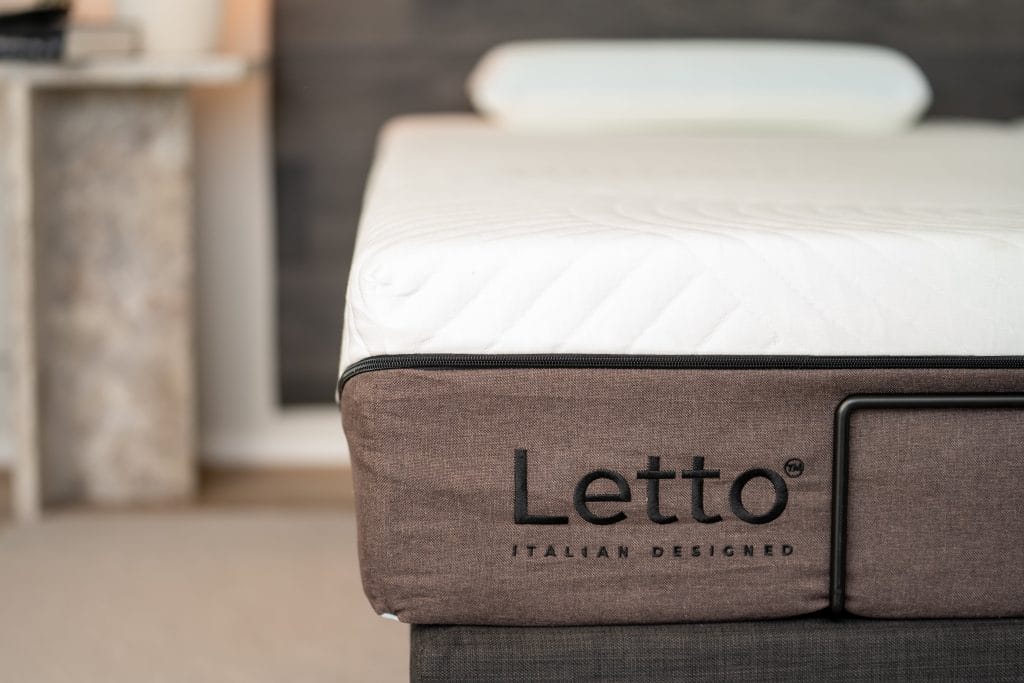
In the past, you would head to a brick-and-mortar store, probably called Sweet Dreams or something to that effect, and test out different mattresses by laying on them for a few minutes.
However, with the rise of online shopping, purchasing a mattress has become much more convenient, but it can also be overwhelming with so many options and no physical testing.
Here are a few things to keep in mind when you decide to buy a mattress.
You can literally buy a mattress just about anywhere these days, I think Woolies even sells them, but that doesn’t mean all mattress retailers are created equal.
You can still go the old-school route of heading to a physical store to test out mattresses. This allows you to feel the mattress and get a better sense of its firmness and comfort level. Plus, you can usually take it home with you that day.
Unless you go to a specific mattress store, you can also compare prices and options from different brands. This is a helpful option if you prefer to see and touch a product before making a purchase.
With online shopping becoming more popular, many mattress companies are now selling their products online.
However, this means you won’t be able to physically test out the mattress before purchasing. This can require a bit more research and potentially some trial and error to find the right fit.
However, online retailers often offer free trials and shipping, making it easier to return the mattress if it doesn’t work for you. Plus, they often have sales and discounts that can make buying a mattress more affordable.
If you know the brand of mattress you want, but just aren’t sure where to buy it, you can always go directly to the source.
These companies sell their own brand of mattresses directly to consumers, cutting out the middleman and often offering a lower price point. This is a great option if you already know exactly what type of mattress you want and want the best price possible.
Additionally, many of these brands offer generous trial periods and warranties.
You can lay on a mattress in a store for 15 minutes or read 100 reviews but ultimately, you won’t know if a mattress is right for you until you spend a few nights sleeping on it.
That’s why many mattress companies offer trial periods and return policies that allow you to test out the mattress in your own home for a certain period of time before making a final decision.
It’s important to carefully read through these policies and understand their terms and conditions. Some companies may charge restocking fees or have specific requirements for returning a mattress.
Additionally, most mattresses come with warranties that cover manufacturing defects. Make sure to check the length and coverage of the warranty before making a purchase, as this can give you peace of mind knowing your investment is protected.
One important factor to consider when purchasing a mattress is how it will be delivered and set up.
Will they be dropping off a box at your doorstep for you to set up yourself, or will they deliver and set up the mattress in your bedroom? Some companies even offer white glove delivery, where they will not only bring the mattress into your home but also remove your old one and set up the new one for you.
The truly innovative companies in the mattress industry are constantly finding ways to make the delivery and setup process as seamless and hassle-free as possible for their customers. With Letto, you’ll be able to set up your bed in 3 easy steps without the need for any additional tools or assistance.
Last but certainly not least, it’s important to consider the level of customer service and support a mattress company offers. From answering questions about product materials and features to helping with delivery and setup, a good customer service team can make all the difference in your overall experience.
Look for companies that have easily accessible customer service channels such as phone, email, or live chat. It’s also helpful to read reviews and see what other customers have to say about their experiences with a particular company’s customer service.
You don’t want to make this investment in a new mattress and then be left on your own if you have any issues or concerns.
One of the most important things to consider, and honestly, what drives a lot of our decision-making, is the cost of a new mattress. A good night’s sleep shouldn’t have to break the bank, and thankfully there are many options available at various price points.
Here are a few things to consider when it comes to budget and value:
Mattresses can range from a few hundred dollars to several thousand, so it’s important to set a budget before you start shopping and to know what your goals are.
Sure you could buy a bed for $300 but the likelihood of having to replace it again in a few years is high. That’s why it’s important to consider both your short and long-term goals when determining how much you want to spend on a mattress.
A good mattress that will last you for at least 7-10 years can range from $1000 to $2000 depending on the size and features. Of course, this may seem like a lot of money upfront, but when you consider how much time you spend in bed and the impact it has on your overall health and well-being, it’s worth investing in a quality mattress.
When it comes to mattresses, value is more than just getting a good price. It’s also about finding a mattress that meets all of your needs and provides the best support and comfort for your body.
Some ways to get the best value for your money include:
Ultimately, finding a balance between budget and value is key in purchasing a new mattress. It’s important to prioritise your comfort and health while also staying within your budget.
When setting a budget for your new mattress, it’s important to consider any additional costs that may arise. Some things to keep in mind include:
It’s also recommended to factor in the cost of a new bed frame if you are upgrading to a larger mattress size. It’s important to plan and budget accordingly to avoid any surprise costs when making your purchase.
Typically, buying a new mattress is an expense we don’t always prepare for. We think we aren’t sleeping great because of stress, work, or busy schedules; however, it could be because your mattress has outlived its lifespan.
But once you’re in the market, when is the best time to buy a mattress? Here are some tips to help you decide:
But ultimately, your sleep health shouldn’t solely rely on the time of year. If you need a new mattress, it’s best to prioritise your comfort and make the purchase when it’s necessary.

Having a good mattress is a game changer for your sleep quality. It can help you wake up feeling more rested, assist with sleep apnea or snoring, and allow you to fully doze off into that REM cycle our bodies love and crave.
Letto mattresses have been designed with all of that in mind and to provide exceptional support tailored to your individual needs. By simplifying the mattress selection process, we aim to help you make informed decisions that enhance your sleep health.
Investing in a high-quality mattress like Letto can contribute to improved well-being and quality of life over time and we are excited to have you on the journey with us. So, whether it’s time for a replacement or an upgrade, we hope this guide to finding your perfect mattress is the first step towards your best night’s sleep.
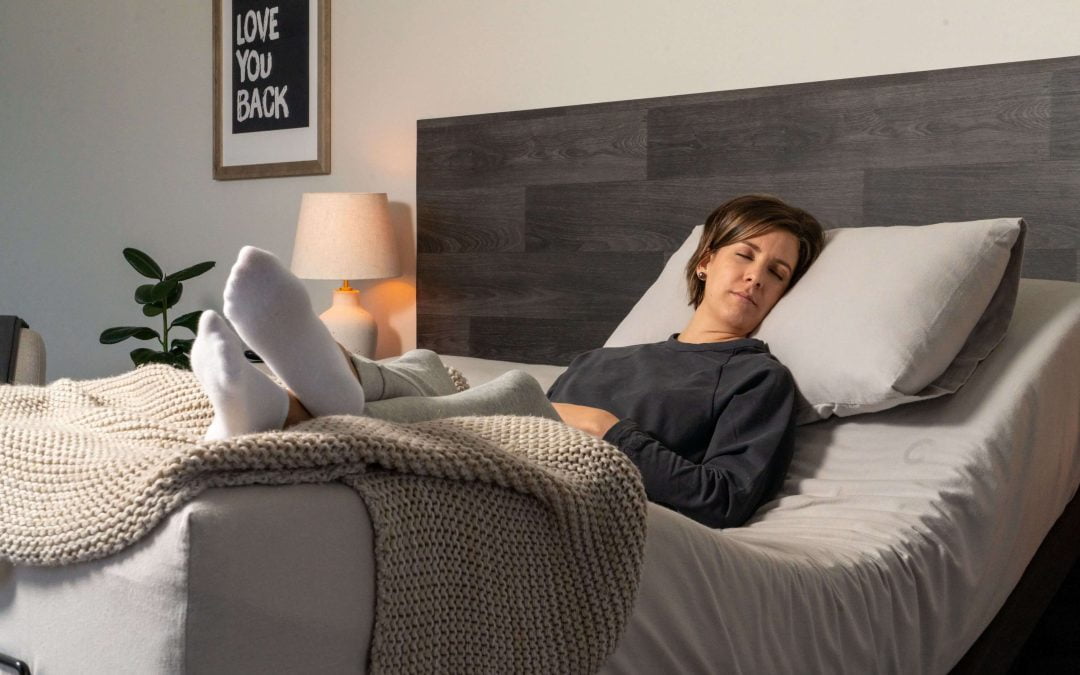

You’ve been sleeping your whole life, so you’d think you know all there is to know about it. But there is so much more to getting quality sleep than just the standard 8 hours we’ve been taught since childhood.
If you’re like most of the world, sleep is something you look forward to every night. It’s a time to relax, recharge, and rejuvenate for the day ahead. But have you ever woken up feeling more tired than when you went to bed? Or maybe you suffer from constant neck pain or morning headaches? These are all signs that your sleep position may not be giving you the best quality rest.
Now, it takes work to retrain yourself to sleep in a different position, especially if you’ve been sleeping the same way for years. However, finding the best sleep position for your body can significantly improve your overall sleep quality and leave you feeling more refreshed and energised each morning. So let’s dive into some of the most common sleeping positions and discuss their pros and cons.
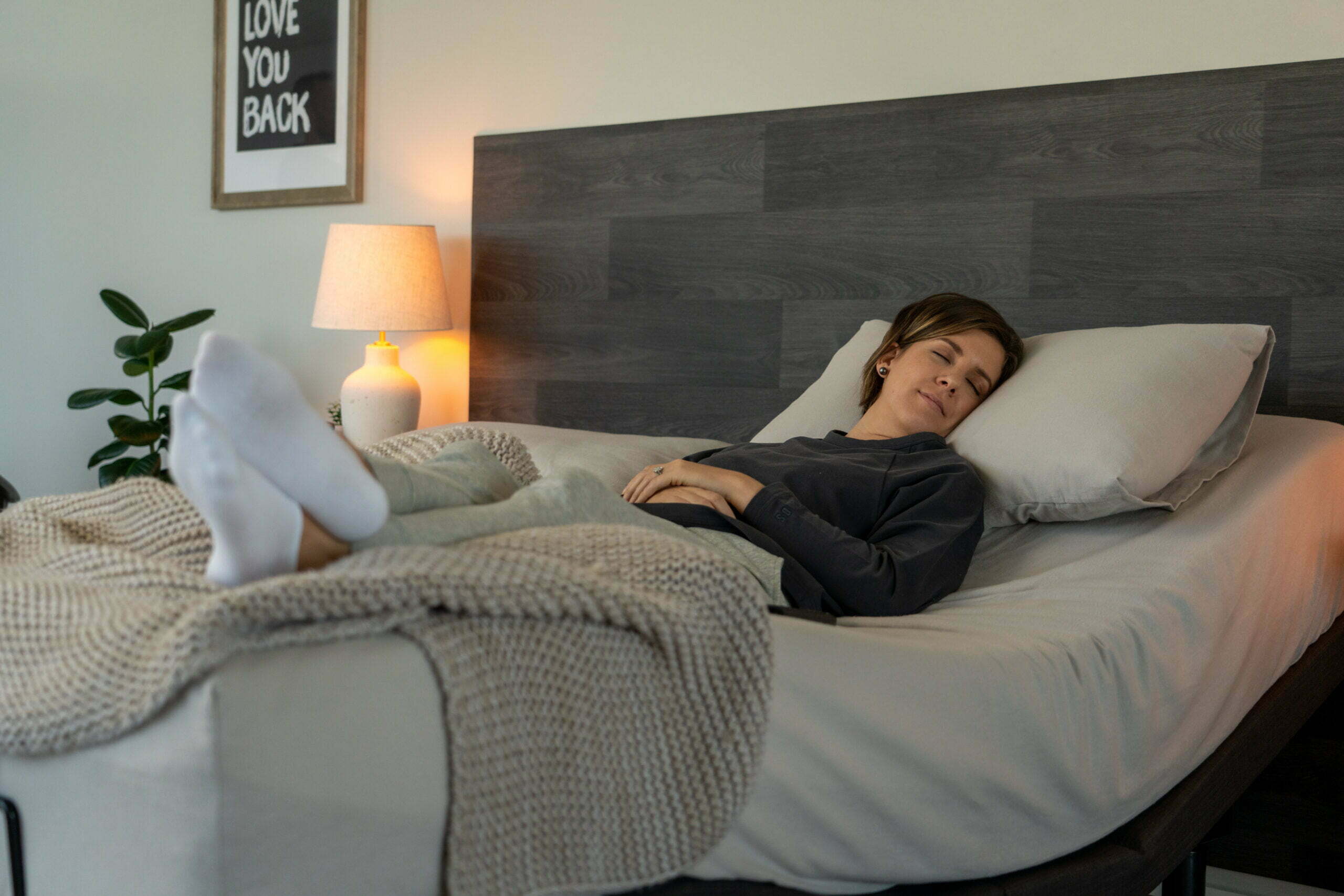
Before we get into the specifics of each sleep position, it’s essential to understand that there is no one-size-fits-all when it comes to sleeping positions. What works for one person to get restful sleep may not work for another, and it all depends on factors such as body type, medical conditions, and personal preference.
There are three main sleeping positions:
Back: Supine
Side: Lateral
Stomach: Prone
Most of us have a prominent sleep position, meaning we tend to sleep in the same way every night. But that doesn’t necessarily mean that it’s the best position for our bodies. In this guide, we’ll look at each of these positions and discuss the benefits and drawbacks of each.
Before we jump into the different positions, let’s talk about why it matters. I mean, for the longest time it was thought that sleep was just sleep. But it affects more than just our energy levels. The position we sleep in can impact everything from snoring and acid reflux to back pain and wrinkles.
Understanding how your sleep posture influences these factors is crucial for your overall well-being. A healthy sleep position promotes proper spinal alignment, which is essential for restorative sleep. By ensuring your spine is in the correct alignment, you can reduce discomfort and improve the quality of your rest.
So let’s get into the nitty-gritty and discuss the pros and cons of the different sleep positions to help you determine which one is best for you.
The most popular sleep position is on your side. It’s also one of the best positions for your health and comfort. When sleeping on your side, it’s important to keep your spine straight. Pulling your knees up slightly towards your chest can help align your spine and reduce pressure on the lower back.
Sleep Apnea & Back Pain
Side sleeping is one of the best ways to reduce sleep apnea symptoms without the need for a CPAP machine, as it helps keep your airway open and prevents snoring.
For those with back pain, sleeping with a pillow between your knees will help keep your spine in alignment. This can also alleviate pressure on the hips and lower back.
Pregnancy and Circulation
Side sleeping can benefit pregnant women by improving their circulation to the placenta and reducing pressure on the liver. It can also help prevent the uterus from pressing on major blood vessels, which can cause discomfort or even dizziness.
Better Digestion
Additionally, side sleeping can allow for better digestion as gravity helps with the movement of food through the digestive tract. It may also reduce gastroesophageal reflux disease by keeping stomach acids from travelling up into the oesophagus.
You can also reduce this by using a memory foam pillow or sleeping on Letto’s adjustable bed. This will help lift your head at night and reduce reflux symptoms.
While side sleeping does have its benefits, there are some potential downsides to consider. For example, it can put pressure on certain joints and muscles, leading to discomfort or pain. This is especially true if you consistently sleep on the same side every night.
Joint Pain
The side sleeping position puts a lot of pressure on your shoulder, hip, and arm on the side you’re sleeping on. This can cause muscle strain or even nerve compression, leading to shoulder pain and discomfort. It’s important to switch up which side you sleep on or try sleeping in different positions to prevent this.
Sleep Wrinkles
Another downside is that side sleeping may lead to wrinkles over time. When you sleep with your face pressed against a pillow, it can create lines on your skin that eventually turn into wrinkles. To combat this, you can use a silk or satin pillowcase which will be gentler on your skin and reduce friction.
The second most common sleep position is back sleeping. This is when you sleep on your back with your face and body facing the ceiling. While it may not be as popular as side sleeping, there are still some benefits to this position.
Spine Alignment
If you struggle with back pain or spinal issues, sleeping on your back may be the best position for you. This is because it allows your spine to remain in a neutral position and reduces pressure on your joints.
If you sleep on your back, a firmer mattress like the Letto Medium Firm Mattress may be beneficial to ensure your spine stays aligned. Additionally, using a small pillow under your knees or purchasing an adjustable bed can also help maintain proper alignment.
Less Wrinkles
Since there’s no contact between your face and a pillow, back sleeping can help prevent wrinkles and skin lines from forming over time. However, this does depend on other factors such as skincare routine and genetics.
While there are benefits to sleeping on your back, it may not be the best position for everyone.
Snoring and Sleep Apnea
Sleeping on your back can make snoring or obstructive sleep apnea worse. This is because gravity can cause the tongue and soft tissues in the throat to fall back and block the airway. If you have these issues, it may be better to avoid sleeping on your back.
Also if you share a bed with someone, their sleep may be disrupted by your snoring. Encouraging side sleeping or investing in an anti-snoring device can help alleviate this issue.
Acid Reflux
Back sleeping can also worsen acid reflux symptoms, as gravity can allow stomach acid to travel up into the oesophagus more easily. If you suffer from acid reflux, it’s recommended to elevate your head while sleeping using either an adjustable bed or a wedge pillow.
Stomach sleeping is arguably the least favourable sleeping position as it can put a strain on the spine and neck. Some people will tell you to avoid this sleep position altogether unless it’s the only way you can sleep.
Reduced Snoring
One of the only benefits of this sleep position is that it can reduce snoring. This is because the position prevents the tongue and tissues from falling back and blocking the airway. However, there are other ways to reduce snoring without having to resort to this position.
Sleep Apnea Relief
Similar to snoring, stomach sleeping can also provide relief for those who suffer from sleep apnea. By keeping the airway open, this position can prevent interruptions in breathing throughout the night.
Neck Strain
Sleeping on your stomach can cause stress and strain on the neck and spine, leading to pain in these areas. This is because the head is usually turned to one side while sleeping in this position, putting pressure on the neck muscles.
If you’re sleeping in that position all night long, that’s like looking to the left or right for hours. This can cause stiffness and pain in the neck, as well as potential long-term damage to the spine.
Back Pain
When you sleep on your stomach, you may also be forced to arch your back which can lead to lower back pain. If you experience any discomfort while sleeping on your stomach, it’s best to try a different position.
Wrinkles and Acne
Stomach sleeping can also take a toll on your skin. The friction between your face and the pillow can lead to wrinkles over time. It can also cause breakouts as the oils from your face are pressed into the pillow.
Best Sleeping Position for Back Pain
If you’re looking for some relief from back pain, it’s recommended to sleep on your side with a pillow between your knees. This helps keep the spine in a neutral position and reduces any twisting or bending that may cause discomfort.
Best Sleeping Position for Neck Pain
For those suffering from neck pain, sleeping on your back with a supportive pillow is ideal. This position allows the head and neck to remain aligned with the spine, reducing strain and pressure on these areas.
Best Sleeping Position for Sleep Apnea
Sleeping on your side is often recommended for those struggling with sleep apnea. This helps keep the airways open and can reduce snoring. If Sleep Apnea continues it is best to consult a doctor.
Best Sleeping Position for Acid Reflux
For those dealing with acid reflux, sleeping on your left side can help alleviate symptoms. This position keeps the stomach below the oesophagus, preventing acid from travelling up and causing discomfort.

While you may start in the ideal position, it’s common to move around while sleeping. To ensure a good night’s sleep, here are a few tips to keep in mind.
Choosing the Right Mattress for Optimal Support
If you are waking up in the morning with aches and pains, it may be time to invest in a new mattress. Finding the right level of firmness and support is crucial for a good night’s sleep.
The Letto mattress is designed for ultimate customization, allowing you to easily switch between medium-firm and medium-soft firmness levels depending on your needs. While one week you may need more support for a sore back, the next week you can switch to a softer feel for your achy joints.
The Importance of Pillow Quality and Selection
Waking up with a stiff neck is one of the surefire ways to ruin your day. Investing in a supportive and comfortable pillow can make all the difference. Letto’s memory foam technology is designed to adapt seamlessly to your unique posture.
You can achieve your ideal pillow size and softness effortlessly with our innovative removable memory foam, adjusting in just 30 seconds. No more tossing and turning, constantly fluffing your pillow to find the right position.
How to Personalise Your Bed for Enhanced Comfort
When it comes to getting a good night’s sleep we all need something different. While your partner may suffer from sleep disorders like sleep apnea and require an inclined sleep position, you may prefer your legs raised to improve circulation. With Letto’s adjustable bed base, both of you can achieve the perfect sleeping position for a restful night’s sleep.

At the end of the day, the best sleep position is the one that helps you get more restful sleep. While there are ideal sleeping positions for certain health concerns, it ultimately comes down to personal preference and Letto is here to support you no matter what. (Literally and figuratively!)
The key to a good night’s sleep is having the right support and comfort for your body. With Letto, you can achieve just that by customising your sleeping experience to fit your individual needs.
With our supportive mattresses and customisable pillows and bed bases, you can create your personalised sleep position. Say goodbye to restless nights and hello to rejuvenated mornings with Letto.